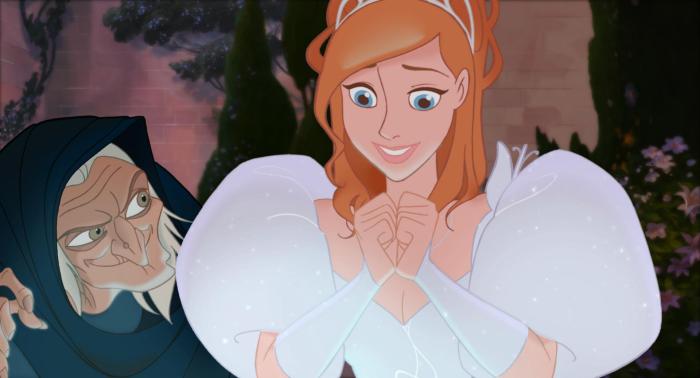
Welcome to The Mouse House Movie Club. Each week (or whenever I get the chance), I dig out a Disney film (either animated or live action) from my shelf, pick a Disney short, and watch both together in one superb evening of Disneyfied goodness. I then write about it in a blog much like (well, exactly like) the one you’re about to read. So, without further ado, here’s this week’s edition of The Mouse House Movie Club.
Short Film: The Art of Skiing, in which Goofy hits the slopes. Like, literally. He literally goes smash bang.
Feature Presentation: Enchanted, in which your dear writer gets on his high horse about Princesses. Again.
The Art of Skiing
Goofy’s a pretty unique character among Disney’s classic set. While the likes of Donald and Mickey have largely stayed the same through their decades-long careers, Goofy has undergone a number of changes. He’s been a single father (in The Goofy Movie and the Goof Troop TV series), a loving suburban family man (during the 50s), and most brilliantly of all, the star of a series of instructional films. Once such film is The Art of Skiing, and while it’s not the absolute best of this somewhat strange series (hello to you How to Play Football), it’s still a work of genius.
Reportedly created to help Disney cope with the departure of Goofy voice artist Pinto Colvig (who had a falling out with Walt), the How To series almost entirely removes Goofy’s need to speak (beyond a few howls and laughs) by giving all the dialogue to a honey-toned narrator. It’s a clever solution to the core problem, but it’s also a frankly ingenious concept because it doesn’t really matter what you have Goofy do, the very idea of an idiot like him offering instructions on how to do something is very very funny.
Yet, there’s more to this series, and this short, than simple laughs. Goofy’s so inept and yet so loveable you can’t help but will him on. As he shambles from one disaster to the next, he seems to become more innocent and the whole concept a little crueller. It’s almost like the narrator is a vengeful God, tormenting our hero and doing nothing to help him out despite his utter incompetence. Theological philosophy in a 1940s Disney short?!…
Well, ok ok…
Yes, that may be taking it a bit too far, but the juxtaposition of the narrator’s calm and Goofy’s anarchy undoubtedly adds to what makes these shorts so special. Watch The Art of Skiing, and if you like it, do check out the others. They’re so brilliant that Disney even briefly revived the format in 2007 with the short How to Hook Up Your Home Theatre. Predictably, Goofy finds it even tougher than most.
And now, our feature presentation…
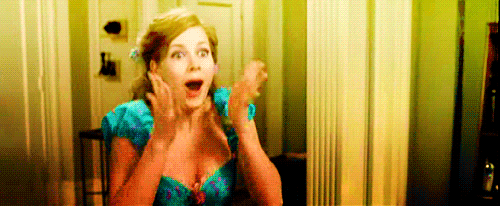 Once Upon A Time…
Once Upon A Time…
With Elsa, Anna, and Rapunzel so prominent nowadays, it’s easy to forget that just a decade ago, the Disney Princess film seemed deader than Hans’ hopes of being King. Shrek did such a comprehensive hit job on the concept that it was not just unpopular to be a Disney Princess, but deemed to be something genuinely dangerous. Princesses were weak and they perpetuated an image of women as passive, wide-eyed innocents who only developed a sense of agency when they found their ‘one true love’. Worse, by portraying Fiona’s Princess form as nothing more than a cover for her true ogre self, Shrek subtly positioned the Princess as a falsehood that no real young girl could possibly live up to.
It’s little wonder then that Disney as a studio was struggling in the early 2000s. Every peak in Disney history has been powered by Princesses, be that the early days with Snow White, the post-war resurgence with Cinderella, the Renaissance with Ariel and Belle, or the modern era with Rapunzel, Anna and Elsa. Every downturn, on the other hand, has been marked by their absence, most notably the 80s and the post-Renaissance period, where the only sniff of a Princess was dear old Eilonwy in The Black Cauldron. I’ve been vocal about how these periods are, artistically speaking, not as bad as many claim, but it’s beyond doubt that they lack direction, and that’s because of the lack of Princesses.
Princesses, in short, get shit done.
As the 2000s wore on, Disney needed to bring the Princess back, acknowledge the damage done by Shrek, and yet at the same time, highlight everything great about Cinderella, Belle, Ariel et al. Their answer was Enchanted, a parody that somehow seems to transcend parody and be as sincere and sweet as Snow White singing to some rabbits in a sunlit meadow. It turned out to be a smash hit, and it opened the studio up to a whole new world (sorry)…

Sword of humour, fly swift and sure
Self-deprecation is a significant weapon. It’s why Donald Trump will never posses any power, no matter how much wealth and fame he accrues: he can’t laugh at himself, and will doggedly pursue anyone who tries with lawsuit clasped in those teeny tiny hands of his. Disney’s a wiser company than many give it credit for, and they knew that the only way to turn the tide against Shrek was to join in the joke. “Hey, y’know what, we get it: we can laugh at ourselves too. Here look…”
Any moron can laugh at themselves though (even Trump let Fallon ruffle his hair). Disney couldn’t simply mock itself, otherwise it’d seem disingenuous. There’s too much riding on Disney’s heritage and they’re too proud of it (rightly so) to mock it with the gleeful abandon that Shrek did. So Enchanted engages in a little bit of light banter: a visual reference here, a sly lyric there. It’s parody, but it’s very very soft, and it wasn’t until I rewatched the film (for the first time in a long time) that I realised the humour doesn’t bit all that much.
Look at ‘Happy Working Song’, for example. Here we have Giselle helping out her adopted family by cleaning their apartment the only way she know how: by calling on her animal friends. You can go very dark with this kind of material; Shrek had Fiona engage in a singing battle with a cute bird where the notes got so high the bird implodes. Enchanted simply replaces fuzzy wuzzy rabbits and owls with dirty wirty rats and cockroaches. This joke has been done many times before and since, and it’s really very tame. But here it works.
Part of the reason for this is that it comes from Disney. It’s like when the President mocks himself at the White House Correspondents’ Dinner. A comedian making those jokes is a little bland because that comedian is able to do so much more than what they’re delivering. When the President makes them, however, it pushes the envelope of what we expect and what’s permissible, and so it feels more dangerous and more exciting. “Did he really say that?!” “Did Disney really just show rats cleaning a toilet with toothbrushes!?”
The other reason it works is because all that humour is covering up something more: a Trojan Horse of a film that’s mocking Princesses while at the same time defending them with much greater force.
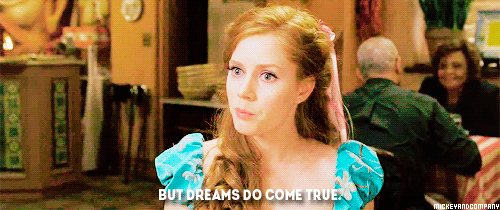
Hey! Keep trying!
Princess songs are critical to the characters’ make-up, so it’s worth diving deeper into Enchanted‘s roster of ditties because they’re at the heart of the sleight of hand the film performs. As I discussed in my Frozen piece, ‘Let It Go’ exists in two contradictory states: both celebrating Elsa’s freedom and lamenting her isolation. The music is triumphant, but the lyrics speak of sadness. Alan Menken and Stephen Schwartz achieve a similar thing here, Menken’s music playing up the pastiche, Schwartz’s lyrics exposing the sincerity.
In ‘Happy Working Song’, we laugh at the ridiculousness of the set up and that ridiculousness is emphasised by Menken, whose music hits the well-worn beats that have become cliches. Schwartz’s lyrics are funny too, but they’re also sincere and somewhat sad. At this stage in the film, Giselle is looking for something to cling to, a ray of reliability in a world she doesn’t understand. Singing is her way of doing that, and she tells us this in the song: “We’ll keep singing without fail otherwise we’d spoil it,” she says at one point. “I guess a new experience could be worth trying,” she later adds with resolve, “Hey! Keep trying!”
Here, in this most ridiculous and parodical of scenes, is the very heart of the Disney Princess: kindness, endeavour, optimism, and openness. Everything about Giselle’s life has been turned upside down – her very being has changed. And yet rather than weeping for what she’s lost, she looks ahead to what she might enjoy. The same is true beyond the songs. When Robert suggests she move out and go her own way, she doesn’t whine or beg to stay with him. Despite her confusion and desperation for a friend, she thanks him for his kindness and goes on with her life, taking the same attitude that if she just “keeps trying” she’ll succeed.
We can dismiss this kind of faith as childishly naive, and the film acknowledges that by having Giselle immediately give the money Robert donates to her away to a stranger. But it’s also inspiring and in ‘That’s How You Know’, Giselle’s optimism inspires all of New York to drop what they’re doing and join in her sense of wonder. Like ‘Happy Working Song’, it’s a sequence that’s superficially rather shallow: Robert’s baffled by the fact that people know the song and he refuses to sing and dance along. Obvious jokes with obvious punchlines.
But the joke’s on everyone who’d mock this kind of sequence in a typical Disney Princess film, because ‘That’s How You Know’ specifically and Enchanted as a whole aren’t really laughing at anything. ‘That’s How You Know’ repeatedly tells us to keep trying – keep being positive, keep being optimistic, keep being kind, keep showing the people you love that you love them. And by the end of it, Giselle’s amassed an army of cynical New Yorkers to dance and sing along in scenes that could easily come from Beauty and the Beast or The Little Mermaid. The audience does the same, because how could you not? Look at it. Look at how awesome this is…
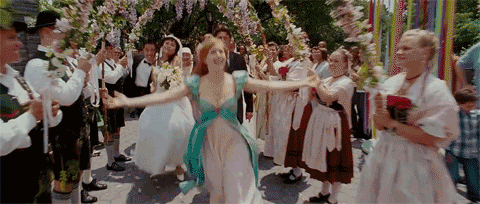
It’s Enchanted‘s greatest victory. The film turns the detractors’ weapon against them by reconfiguring a parody song into something that seems like it’s making fun, but is actually defending everything the Princess films have always been about. Many a true word has indeed been spoken in jest…
It fits…
Yet a bigger question remains. Enchanted needed to do more than simply shake off the derision that Shrek had incited; it needed to evolve the relevance of the Princess film by going beyond self-reflexity and touching on social relevance. It achieves this beautifully not only through where it takes Giselle, but also how it plays with the characters of Edward, Robert’s girlfriend Nancy, and Queen Narissa’s henchman Nathaniel.
Nathaniel may be the most proactive bad guy for most of the film, but he’s only evil because he labours under the misapprehension that Narissa will one day love him. His revelation that he simply doesn’t like himself very much plays into this and is one of the many little moments of deep, sincere meaning that Enchanted has to offer: we all do bad things because we think they’re going to eventually make us happy. In many ways, his journey plays like a mirror image of Giselle’s. He’s looking for a happy ending too, he just goes about it in an underhand way.
The same is true of Nancy and Edward, who end up together in a finale that ties together a little too neatly, but is still critical to the film’s overarching message and social significance. Neither character ever breaks out of their fairy tale mindsets, always believing that true love’s kiss is just around the corner. Are they wrong for taking this view? Of course not. One of the many wonderful things about Enchanted is that it never once laughs at its characters for their desires, never ones accuses them of being stupid. It simply accepts them and shows why the characters might need them.
This attitude contributes to one of my favourite scenes in the film. Having taken a bite from Narissa’s poisoned apple, Giselle is knocked out and needs true love’s kiss to bring her to. The film attempts no mockery of this moment, and doesn’t try to invert it as Maleficent or Frozen did (with great success). It plays it sincerely, and uses it to draw its characters into finally admitting their feelings: Robert and Giselle love each other. What follows is pure kindness: confronted with a moment that will end their hopes of cementing their relationships with their respective partners, Nancy and Edward don’t feel bitter or angry and they don’t jealously try to split the couple up. They encourage Robert to kiss Giselle because they know it’s true love, and they care about that, Giselle, and doing the right thing. Edward, the massive optimistic dope, is even beaming with delight as Robert goes in for the all-important smooch.
It’s the film in microcosm. Confronted with a moment that could have been subverted, Enchanted ignores sarcasm and plays it straight, smiling not a smile of derision, but of sheer joy. It’s kind, it’s warm, it’s… nice. It tells us that Princesses – whether actual Princesses or just those who aspire to be Princesses – are heroes because they accept people and never once try to diminish them.
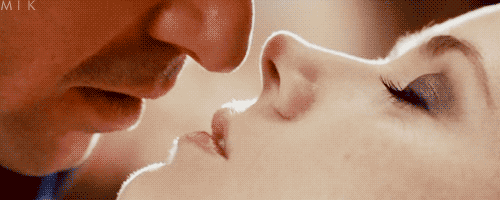
That’s powerful stuff and it both shames the satirists and teaches a valuable lesson to kids. “Hey,” it says, “there’s nothing wrong with being a Princess, there’s nothing wrong with not being a Princess. Do what brings you joy, respect what brings others joy, and may you all find your happily ever after.”
What a lovely idea, and Enchanted shows us that maybe it doesn’t just exist in storybooks.
Next week: it’s Halloween, so time to get spooky (or spoopy as ‘the youth’ call it) with The Black Cauldron.
Great review of a great film! And yep, for a parodical nature, this film did indeed defend princesses!
LikeLike
Thanks for the kind words – glad you liked it. Enchanted is a wonderful film isn’t it? So happy to see they’re finally making a sequel!
LikeLiked by 1 person
Related: https://www.youtube.com/watch?v=P9JGPoUeCk4
Everything she says about Shrek coming from a place of utter hatred.
LikeLike
Superb video – even if it did remind me that Shark Tale exists.
She’s pretty spot on with everything there – the hatred in Shrek, the weaknesses of Dreamworks, everything. I always hope Dreamworks deliver the goods, but sadly truly great DW pictures rarely come along. They desperately need to move on from the Shreks and the Madagascars.
LikeLiked by 1 person